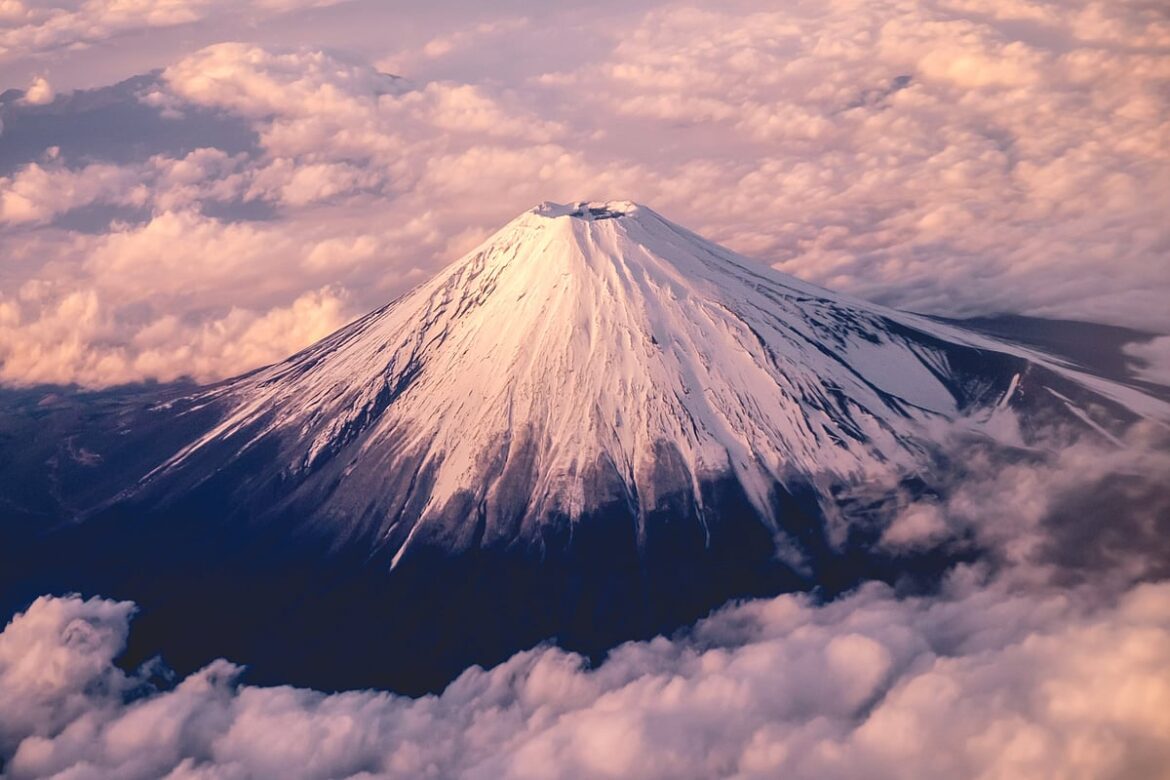Mount Fuji last erupted in 1707 samuelponce/Shutterstock
A Japanese government-appointed panel has come up with measures on what to do if Mount Fuji erupts on a massive scale and spews large amounts of ash. The country’s highest peak last erupted more than 300 years ago.
Mount Fuji’s last confirmed eruption began in 1707 and lasted for two weeks. Experts say an eruption on a similar scale could blanket wide areas of Tokyo, Kanagawa prefecture and elsewhere with 10 cm or more of ash. The panel, made up of volcanologists and disaster-preparedness experts, said in its report that it would not be realistic for residents of densely populated Tokyo and its surrounding prefectures to flee the region at once.
Guidelines To Follow In Case Of Mt. Fuji Erupts
Japanese experts say an eruption on a similar scale as Mount Fuji’s 1707 eruption could blanket wide areas of Tokyo, Kanagawa prefecture and elsewhere with 10 cm or more of ash
This is the first time detailed guidelines and advisories have been issued for residents on how to act in such situations. The expert panel has categorised potential scenarios into four stages based on ashfall severity, ranging from Stage 1 (ashfall under three cm) to Stage 4 (ashfall exceeding 30 cm). The government intends to distribute these guidelines to relevant ministries and prefectures to assist in disaster response.
In the first three stages, the ashfall is not expected to pose immediate danger to those working outdoors. However, prolonged exposure may cause health issues, such as throat and eye irritation.
As a precaution, residents are advised to stay indoors and avoid unnecessary trips. If leaving the house is necessary, they should wear goggles and masks to reduce health risks. Individuals with respiratory conditions are encouraged to take extra precautions.
Driving is discouraged during an eruption due to the high likelihood of reduced visibility from the ashfall.
Although residents are recommended to store a week’s worth of emergency supplies at home in preparation for a big earthquake affecting the Tokyo metropolitan area, the panel recommends stocking up beyond this, given that an eruption can last longer, which could make it difficult for people to restock supplies.
The panel warns that in the event of Stage 4 ashfall, essential services such as power, water and cellphone reception would likely be interrupted.
People in areas accumulating 30 cm or more of ash need to evacuate as the risk of wooden houses collapsing under the weight of wet ash, if it should rain, is high.
People requiring dialysis or nursing care should evacuate when the ash reaches three cm and causes prolonged power outages.
As part of the evacuation plan in case Mt. Fuji erupts, the experts also underlined the need for the government to identify locations where fallen ash can be immediately relocated, at least temporarily, to facilitate relief efforts. Additionally, they have suggested disposing of fallen ash either by using it as a natural resource for sectors such as construction, placing it in landfills, or, as an emergency measure, discarding it into the ocean.
The government should establish a system to disseminate information, including volcanic ash forecasts. Central and local governments also need to secure evacuation routes.
(With inputs from multiple news reports)


AloJapan.com